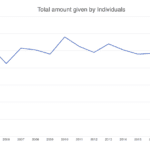Putting the power of mums to work
Nick Clegg is off to the UN Summit in New York at the end of September andSave The Children want to put some pressure on him to encourage world leaders to refocus their efforts to ensure we achieve the Millennium Development Goals.
Getting help from 100,000 people to nudge him in the right direction through signing a petition is part of their plan and they have decided that some influential UK parenting blogs could be a good recruiting round.
So they have invited three prominent bloggers: Josie from Sleep Is For The Weak, Sian from Mummy Tips and Eva from Nixd Minx to fly out and see what the charity is doing in Bangladesh. All three will obviously be speaking to mothers and children about their lives, hopes and fears and sharing their experiences on their blogs.
And through their blogs, they’ll encourage their readers to get involved by signing the petition, donating money and giving unwanted clothes and household goods to their local Save the Children shop.
Some tweeters with huge followings like Neil Gaiman and Stephen Fry have already starting promoting the campaign (known as #blogadesh) and are generating some significant traffic.
But it will really kick off when the bloggers start writing about what they see. When someone you know and trust as a source of advice and inspiration starts talking about poverty, it’s going to be more relevant, more motivating and more engaging that just seeing an advertising banner asking for help.
There’s been some interesting research in the last few years in neuro-cognitive science that helps explain why this is the case. In short, if we see someone experience an emotion – anger, joy or sadness – the same neurons spark in our brain as if we were experiencing it ourselves.
It’s one of the fundamental donor needs. We are driven to be sociable. We need to belong. And it’s empathy which is the primary driver behind that need.
Rather than make you trawl through 1,500 words on the latest scientific research that backs up this claim, I’ve found this great animated video from the RSA where Jeremy Rifkin explains it far more effectively (and entertainingly) than I ever could.
As you’ll see, new technology is changing the way we think about our fellow human beings. We are now extending our identities far beyond national and religious boundaries.
As a result, we are able to directly relate to people’s suffering on a far more personal level – as mothers for instance – and do something that is becoming increasing clear that we psychologically need to do – offer help.
That’s why I think Save The Children’s approach is so exciting – it directly taps deep into our psyche and, as a result, I expect the outcome should be very rewarding for everyone who’s involved – not just the people being helped in Bangladesh.
For more more details on donor needs take a look at this previous post.
Thanks to @charityclare for the heads up.









